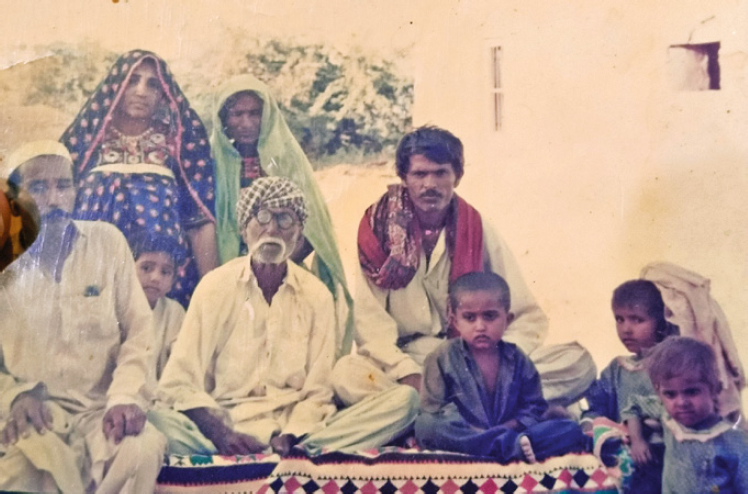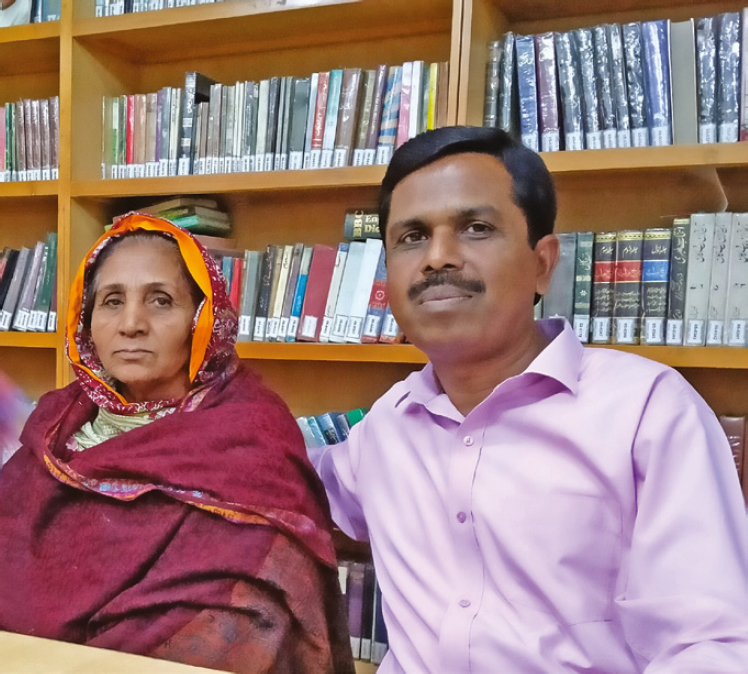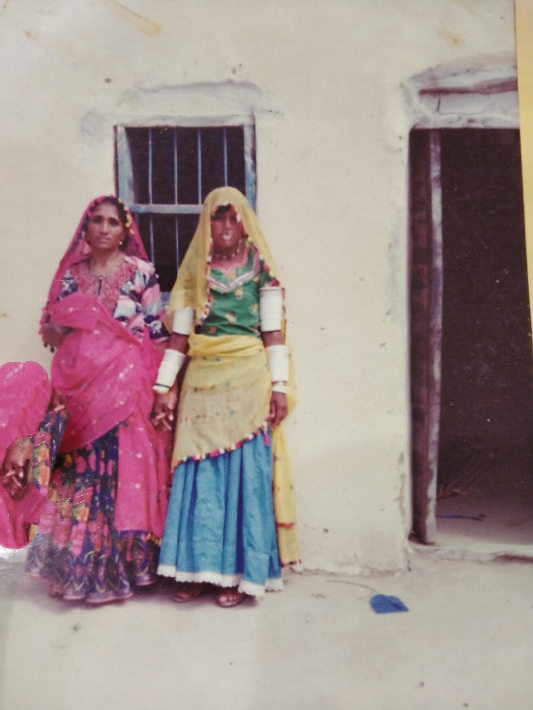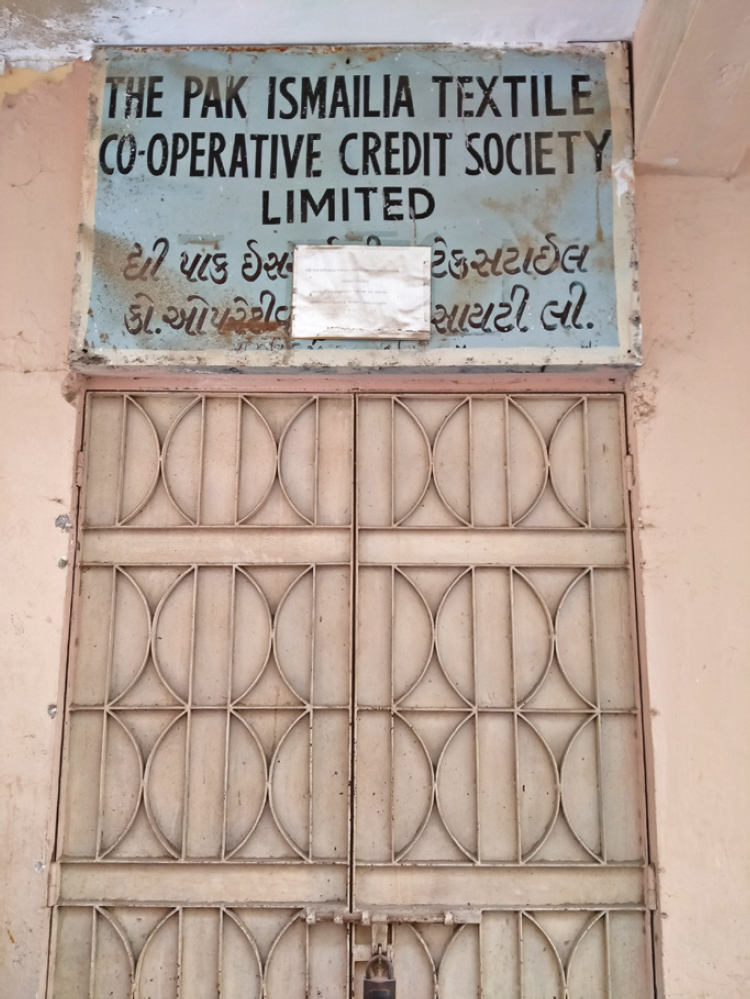
Between 1964 and 1979, Bhils and Kohlis in Kebhar experienced three waves of conversion efforts. In these waves, Ismaili missionaries targeted community headmen. In response, they recognized the 49th Imam of Shia Ismaili Muslims.
Mahek Khwaja
[Indo-Muslim history is hybrid. The Hindu Bhil and Kohli communities of Khebar, Sindh, are examples of this hybridity. Before Partition in 1947, when socio-cultural ambivalence was widespread, Bhils and Kohlis lived alongside Muslims. After Partition, the situation changed, and these communities suffered socio-economic isolation. Between 1964 and 1979, Bhils and Kohlis in Kebhar experienced three waves of da’wah (i.e., calling people to embrace Islam). In these waves, Ismaili missionaries targeted Patels (i.e., community headmen). In response, this group recognized the 49th Imam of Shia Ismaili Muslims as a manifestation of the dasa avatara from Hinduism. This article addresses what factors led to this recognition and how groups cross thresholds between Hinduism and Islam]
The Missionaries
“On other occasions, they have worked without the institutional umbrella, out of their personal zeal and with a sense of service for the community,” Valliani states about the missionaries who operated in Khebar. As part of the Shia Imami Ismaili Muslim community, I am familiar with its ethos of selfless service based on the Imam’s blessings and community betterment. In my research, I could not reach any conclusion that suggests the missionaries undertook their work out of personal interests. In a conversation with Alwaez Madad Ali Karam Ali, Acting Assistant Director of Academic Affairs at ITREB, I learned that those associated with the Ismailia Association (IA) received regular pay or “bakhshish.” The IA didn’t instruct individuals to undertake da’wah activities in lower Sindh in the twentieth century, but, instead, missionaries volunteered for the task. The missionaries working in nearby villages were aware of areligious worldviews among Bhils and Kohlis. They decided to extend social and religious support structures to them to improve their lives. While the IA did not institutionally sponsor this support, Alwaez Madad Ali reported they had the Imam’s approval. Jan Muhammad, who got blessed by the 49th Imam, was the founder of these missionary and support activities in Khebar (as well as in Shah Ali and Alyabad).

Alwaez Muhammad Yousuf helped me interview a vital source, Rehmat Jan Muhammad (known as Rehmat Bai) from Kali Mori, Hyderabad. The second wife of Jan Muhammad, she accompanied her husband throughout his missions. According to Alwaez Muhammad Yousuf, who became Shia Ismaili Muslim in 1979 during the third da’wah cycle in Khebar, it was due to Jan Muhammad’s “struggle and knowledge that we became Ismailis, but this struggle would have been incomplete without the magic of Rehmat Apa’s voice.” Rehmat Bai, a seventy-year-old lady at the time of our meeting, showed up with her daughter at ITREB, Hyderabad, and was more than happy to share her stories with me.
Imam Sultan Muhammad Shah (d.1957) approved Bhagat Pirbhai (d. 1973) and Wazir Ali Muhammad Daya (d. unknown) for missionary work in Gujarat and other parts of India in 1952. In 1955, Jeeva Bhai, from Tando Bhago, District Badin, became Ismaili in one such da’wah cycle. The missionaries renamed Jeeva Bhai when he became a Shia Ismaili Muslim. Jan Muhammad later got married to a woman from his village. But he married for a second time around forty to forty-five to a younger girl named Rehmat. This second wife, whom I met with, did not have children until after six years of marriage. As a result, she accompanied her husband on his missionary work. Rehmat Bai’s narrative was quite like what I heard about Jan Muhammad from converts: he initially entered the Patel’s house and won influential converts, including the Patel and his five brothers. Subsequently, and gradually, this process expanded over the whole village and numbered up to 1,500 converts over two years.
Jan Muhammad was a reciter and scholar of ginans and bhajans, and he tutored his wife in both. In 1964, when the 49th Imam of Shia Imami Ismaili Muslims came to Hyderabad for didar, he went to the Imam at a mehmani with this ardent desire to continue Bhagat Pirbhai’s missionary work. When the Imam patted his shoulder, he received it as a sign of approval and subsequently approached the Patel of Khebar. At first, he showed up as a vagabond, sleeping outside the Patel’s house. Thinking he was a wandering bhagat, the Patel asked his wife to treat him with food and water every two to three days. “He was not mazhabi (i.e., religious), but he was nice to others,” Rehmat Bai commented about Ali Muhammad Patel. When the Patel and his family inquired about Jan Muhammad, he said he lived in Hyderabad. Afterward, the Patel with his brothers visited Kali Mori, Hyderabad. After asking around, they arrived at Jan Muhammad’s home and discovered that the “bhagat” lived a decent life with his family. Here the Patel met Rehmat Bai, then a fifteen-year-old girl (who reminded him of Sohni, his daughter who had recently passed away at about the same age). From that day on, Rehmat Bai accompanied her husband on his visits to Khebar and attracted listeners to her melodious bhajan singing voice.
Virani’s arguments about how, for the Guptis of Bhavnagar, taqiyya (i.e., dissimulation) is “not simply a veil used to avoid harmful consequences but forms an integral part of the Guptis’ belief system and identity” relates to the Khebar case. In Rehmat Bai’s view, bhajans were not alternatives to ginans. Bhajans entail a messianic framework in which Hindus wait for the dasa avatara. Ginans, on the other hand, are naturally responsive to bhajans, which showcase Mawla Ali as the dasa avatara. Alwaez Muhammad Yousuf also recollected how Rehmat Bai and Jan Muhammad recited bhajans and then ginans as responses. The implication was that the Lord they are searching for through bhajans has reincarnated as Mawla Ali in the ginans.
1964 was an important year. It was the 49th Imam’s visit to Pakistan. Since private missionary activities operated in lower Sindh before this visit, there were people from Hindu castes who, even without reciting kalima and officially becoming Muslims, traveled to Hyderabad to see and attend the didar. Jan Muhammad was directly involved in taking a group of Hindus with him to the didar, without informing the larger Ismaili Council, “so that they see that this is the true faith.” After attending didar, many Hindus returned to their villages and announced to others that they had seen the dasa avatara. Didar was an impetus. Hindus of Khebar started paying homage to photos of the 49th Shia Ismaili Imam’s photo but called it a depiction of Rama or Krishna. Gradually, these photos found places inside many homes, and people started to believe that the dasa avatara had manifested. They publicly stated that they would remain Hindus but that the missionaries would make them “good Hindus” because both Bhils and Kohlis disliked Muslims. “I remember a bunch of Kohlis asking us: You are not here to make us Muslay, and we assured them that we are not,” Rehmat Bai stated.
From 1964 to 1967, da’wah was a clandestine affair, and missionaries used the terminologies of Hinduism to develop greater religious inclination among Bhils and Kohlis. They reinterpreted Hinduism, like Khan argued was the case for Khojas. Hindu beliefs, myths, and symbols were not simply adopted. Instead, missionaries created new functionalities for existing signs. Regarding this process, Khan draws an apt analogy of a time machine:
More than that, the Nizari missionaries literally infiltrate the theatre of Hindu mythology, just as science fiction characters penetrate, with the help of a time-machine, into the realm of the past and even take part in historical events by which they attempt to modify the course of history. In this way, one could say that Nizari poets have not negated, but partially “rewritten” and recast into a new mold the epics and legends associated with Hinduism.
Bhajans posited the dasa avatara as Naklanki (i.e., the immaculate or faultless one). But missionaries transformed Naklanki into a reference for Imam Ali and used it with the Arabic epithet maʿsum, a term frequently used for Ismaili Imams. The promises of liberation (i.e., moksha) and paradise (i.e., swarg, amrapuri, or vaikunth) got redirected to the soteriological potential of the Imam. As mentioned previously, the mud-built jamatkhana made by missionaries was a mandir for housing the Gita and Vedas at its outset. At first, a zikr for Ram occurred, and then, gradually, Ali got incanted in that space. Missionaries recited the Arabic dua in a shallow voice initially, but those attending chanted “Ram” and “Krishna.” In 1967, when the community was more extensive, individuals chanted formally in unison. Such behavior is not unique. Teena Purohit, like Khan, comments on how Ismailis cannot be easily understood as a “sect” or an “addendum” to the grand Middle Eastern Islamic narrative because their beliefs transpire within a culturally hybrid Indo-Islamic ecumene.
When I asked Rehmat Bai if any other da’wah tools proved effective in the conversion process, she made two points. One was language. The portion of Sindh where da’wah activities took place had two parts: Lar and Tharparkar. Lar is a “mainstream” area that constitutes populated regions, like Badin, Tando Bhago, and Tando Turail. This area predominantly speaks the Sindhi dialect of Lari. In contrast, people in Khebar predominantly use the Tharparkar dialect. Rehmat Bai said she was not used to it, but her husband knew it quite well and taught her. The absence of a language barrier meant there were high chances of success. She also said her husband was quite meticulous about not appearing “foreign.” She showed me photographs of herself dressed in a Tharparkar costume – an embroidered ghagra (i.e., a skirt) with her head covered until the forehead. Sometimes, she wore white bangles on her arms because she was married (unmarried women cover up to their elbows). The second tool she pointed to was intellectual debate. She said that her husband had good interfaith knowledge. He was an excellent orator who always attracted many people. She credited Jan Muhammad’s argument, analysis, and delivery of ideas with expanding the number of converts in Khebar.

As far as I could find, Rehmat Bai is the only living missionary from the first da’wah group because she was young at its time. If there were other living missionaries from that group, they were not accessible to interview. Despite only interviewing Rehmat Bai, she was an incredible resource. But there was a group of missionaries involved in the conversion process. Due to Alwaez Muhammad Yousuf’s writings, I learned that Alwaez Haji Pir Muhammad, Alijah Abdul Aziz Rai Abdullah Heerji, and Alwaez Mustafa Mansoor Ali were also part of the group. In addition to these individuals, influential leaders operating from the Khebar Welfare Society were important. This organization and these individuals are the focus of this article’s next section.
The Khebar Welfare Society
Before conversion by Ismaili missionaries, there was a sense of community among Bhils and Kohlis in Khebar at an imaginative, if not a functional level. They had a distinct historical narrative that influenced their social standing. It was essential to reconstruct their sense of themselves to make them part of the Ismaili community. This reconstruction had a socio-economic element and was not merely religious. Although never formally institutionalized, the critical social organization in this process was the Ismailia Khebar Welfare Society (commonly referred to as the Khebar Welfare Society) and its liaison with Shia Imami Ismaili Council for Pakistan.
My understanding of the Khebar Welfare Society comes from interviewing Alwaez Madad Ali Karam Ali and Alwaez Muhammad Yousuf’s writings. The latter’s writings document a discussion between Wazir Qasim Ali Muhammad Jaffer (President of IA) and the society. Unlike groups patronized by the state and powerful international agencies, the Khebar Welfare Society never received official financial patronage. There were also no sources indicating that Ismaili missionaries engaged in violence. In fact, in all the narratives that I collected, none involved the radicalization of religious ideals and aspirations. As the Khebar Welfare Society’s name suggests, the group operated privately to support underprivileged groups in lower Sindh through welfare efforts. It was not a formal organization initially. Its funding was often personally contributed by influential leaders and missionaries. But, sometimes, there was support from the Shia Imami Ismaili Council for Pakistan. This support is how the Khebar Welfare Society first came to be known more broadly when, in the early 1960s, the council marked funding for Khebar, Shah Ali, and Alyabad. The society’s welfare initiatives were not utterly aloof from exposing people to religious ideas, but neither did its activities explicitly include religious preaching. The organization held faith-based and socio-economic elements in a composite or “an interplay between historical dynamics and social factors.”
During the first, second, and third cycles of da’wah, the Khebar Welfare Society operated well in the field and helped rehabilitate converts. The society even developed settlements in Hyderabad and Karachi. The most noteworthy individuals working for the Khebar Welfare Society were Jan Muhammad, Patel Ali Muhammad Sukhio (from Khebar), Mukhi Sher Muhammad Nurani (from Dambalo), Mukhi Jaffer Ali K. Mithani and Dost Muhammad (from Banbhore), Mukhi Ghulam Haider Muhammad Juman (from Dasori), Muhammad Juman (from Sheikh Bhirkio), and Nur Ali Qaim (Gwadri).One of the many vital roles of the Khebar Welfare Society was as a linchpin. It represented the Khebar jamat at the axis of official institutions. Alwaez Muhammad Yousuf pointed out how the Khebar Welfare Society introduced the Khebar jamat to the larger Ismaili community. In 1979, Mukhi Jaffer Ali K. Mithani, representing the Khebar Welfare Society, and Wazir Ramzan Merchant and Wazir Akbar Ali H. Karamali met with His Highness Prince Karim Aga Khan, the 49th Imam of Shia Ismaili Muslim community at the Aiglemont estate near Paris. In this meeting, along with other concerns, they submitted a special request to the Imam that friends and relatives of new Khebar jamat desired to be a part of the community. Their request got granted because they agreed to take responsibility for the group’s quality of life and plans for good health and education. In March 1979, the IA arranged a kalima ceremony in Karachi, where a mufti led a ceremony to change Hindu names to Muslim names. Alwaez Yousuf shared that his name was Yousuf before embracing Islam, so the mufti asked him if he wanted to continue with his old name as it was already a Muslim name. He added Muhammad to his name, and he was Muhammad Yousuf afterward. A few days later, a bay’ah ceremony took place at the Kharadar Jamatkhana in Karachi. A taliqa from the Imam arrived on October 9, 1979, that expressed acceptance of the new Ismailis from Khebar into the Shia Ismaili Muslim community and conveying to them affectionate blessings.

In November 1979, the 49th Imam came to Pakistan for a visit. The Ismaili community arranged a mehmani, and representatives from the Khebar Welfare Society presented offerings at it. While accepting the offerings, the Imam entrusted Huzur Mukhi Patel Ali Muhammad to strengthen the younger generations in religious education. After returning from mehmani, Patel Ali Muhammad conveyed the Imam’s instruction to others at the Khebar Welfare Society. Afterward, it selected adolescent boys from the villages in which the society operated to prepare a group of fifteen to twenty to receive waezin training in Karachi.42 Musa Bhai Mithai Wala, a member of the Khebar Welfare Society who ran a sweets business in Karachi, donated a flat where the boys could live and pursue their secular and religious studies. At first, the boys’ families were reluctant to send them because they could earn by working in the fields. The Khebar Welfare Society offered them stipends larger than their annual income to compensate the boys’ families. Alwaez Haji Pir Muhammad, learned in Quran, Hadith, Sirah, Shi’i studies, philosophy, and logic, became a full-time tutor. Alijah Abdul Aziz Rai Abdullah Hirji and Alwaez Mustafa Mansoor Ali were also involved. The boys grew into full-time missionaries, which the ITREB later hired. Among the boys trained as missionaries in the first cycle were Alwaez Karim Baksh Khaliqdina and Alwaez Abdul Rehman Fateh Ali of the Khebar jamat.
Alwaez Muhammad Yousuf and Alwaez Pyar Ali Ghulam Haider are two similar missionaries that I know in my capacity as a community member. I attended sessions and read writings by both individuals. According to Alwaez Muhammad Yousuf:
We couldn’t hold a pencil before that. I was around thirteen at that time, like other boys in the group, and we only memorized waez scripts by rote learning that Alwaez Haji Pir Muhammad prepared for us. But we worked hard. The committee and our teachers worked hard. At fourteen, an urban lad appears for board exams because he had been schooled for at least ten or eleven years before that. We were new to writing, yet we appeared for the secular examination after three-four years. Today, most of the waezin from this group have master’s degrees in more than one discipline, and they are excellent at Urdu, English, Sindhi, and Arabic.
The role of the Ismailia Khebar Welfare Society was tremendous in bringing these results. The waezin under training got opportunities to deliver sermons before jamat and the jamati leadership.
Alwaez Madad Ali Karam Ali reported that Shia Imami Ismaili Council now institutionalizes most funding and officially addresses socio-economic concerns in the community. Nevertheless, the Khebar Welfare Society remains indispensable. As discussed earlier, it bridged the gap between the new Ismaili group in Khebar and other jamati institutions. In 2000, when the Imam visited Pakistan, the council took responsibility for disseminating didar tokens within the jamat. It strictly monitored the process, and the occasion remained a community affair. When it came to the Khebar jamat, regional ITREB was reluctant to issue cards to these individuals because much happened privately; the institutions did not have access to demographic records from the region. Alwaez Madad Ali Karam Ali of the ITREB presented a report that stated they were essentially a part of the community by their own will. He said to the ITREB management that a large portion of the Khebar jamat is Shia Imami Ismaili Muslim by belief, so there is no reason for not letting them become a part of the congregation.
Conclusion
What role did the Patel system, missionaries, and the Khebar Welfare Society play in converting Bhils and Kohlis? This question is about power. Missionaries and the Khebar Welfare Society largely managed the process. But my goal was to ask whether such external entities deserved sole credit for the successes of conversion? What roles did the Patel system and local individuals play in the process? Was conversion culturally and conceptually configured in ways that made people fertile to external influences, or was it an organic shift?
I conclude that it was organic. External influences were crucial variables in Khebar, but they would not have been successful without a favorable preexisting conceptual framework. Khan notes that Ismailism and Hinduism share flexible traits, a significant insight for my research. Khojas realigned their identities to Islam and had an adaptable approach toward religion that did not depend on a single set of practices. Like Hinduism, Ismailism has an open-mindedness capacity that permits it to survive in societies that are in transition. In this sense, conversion from Hinduism to Ismailism does not necessarily represent a radical socio-cultural shift. This shift also involved crucial matters of social rehabilitation. The social upliftment opportunities that Ismailism offered to Bhils and Kohlis were significant. As a result, rather than transcending forces controlling the conversion process externally, its dynamics operated organically on a fertile socio-cultural and historical plain of missionaries, Patels, and individuals associated with the Khebar Welfare Society. (Concludes)
__________________
Courtesy: Journal of Sindhi Studies/ Brill (Published on 12 Nov 2021)
Click here for Part-I